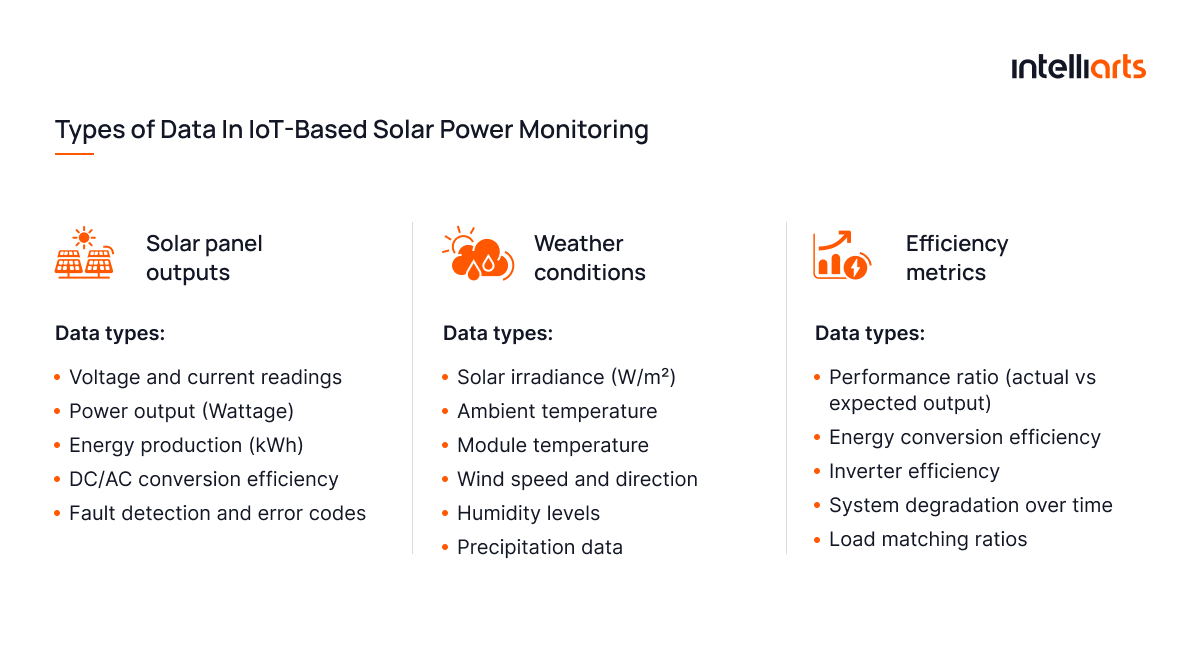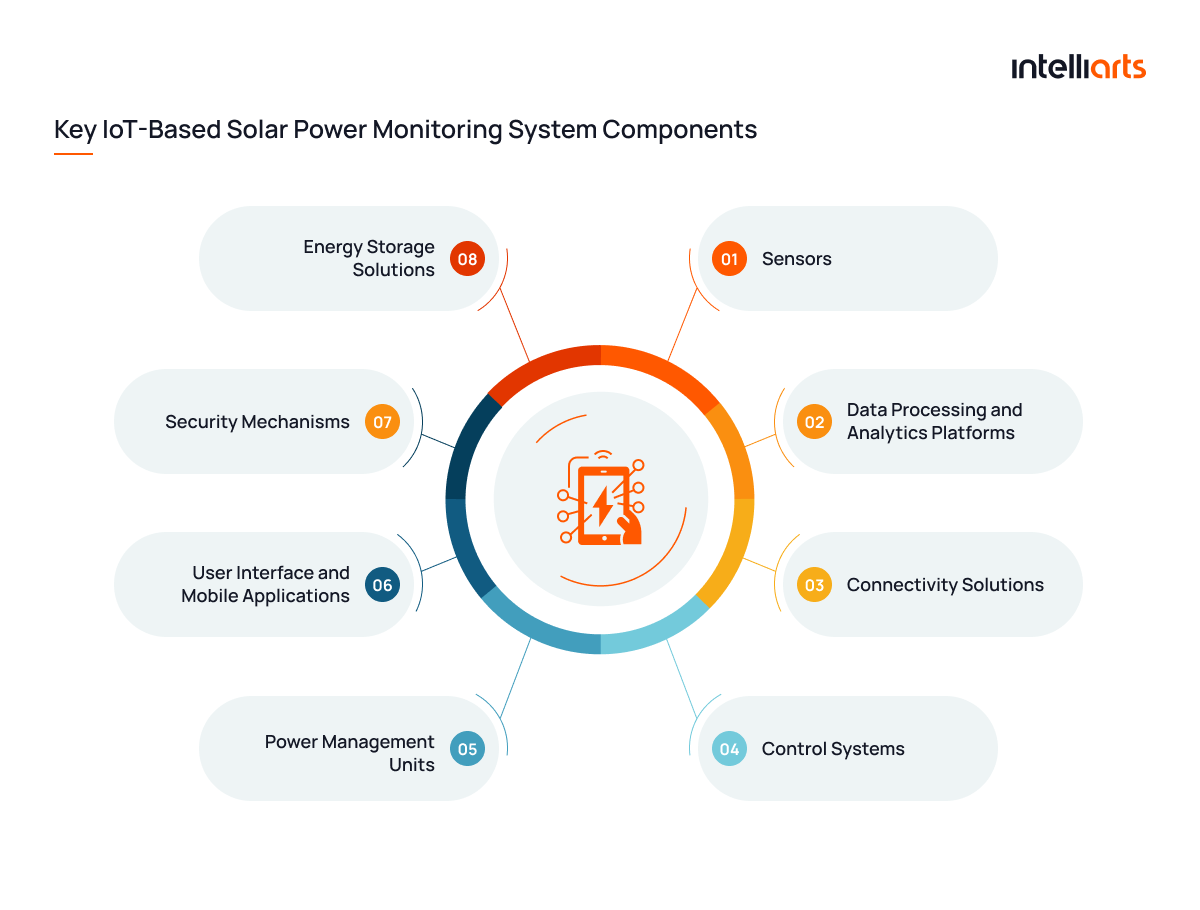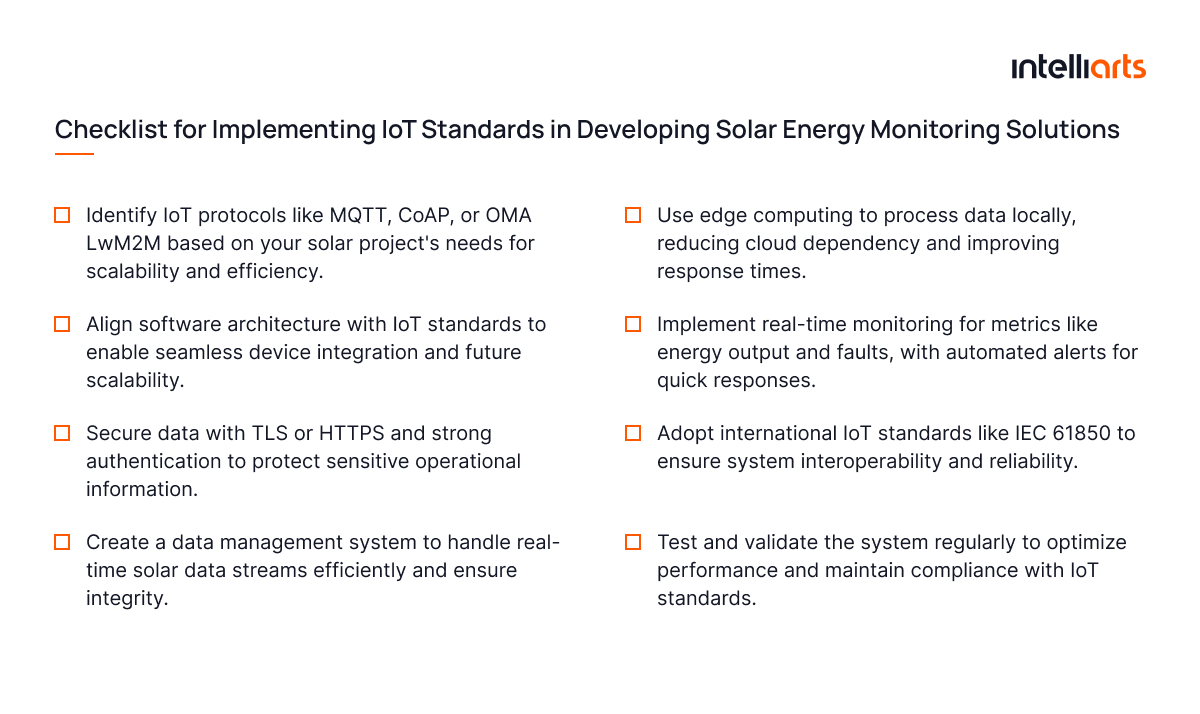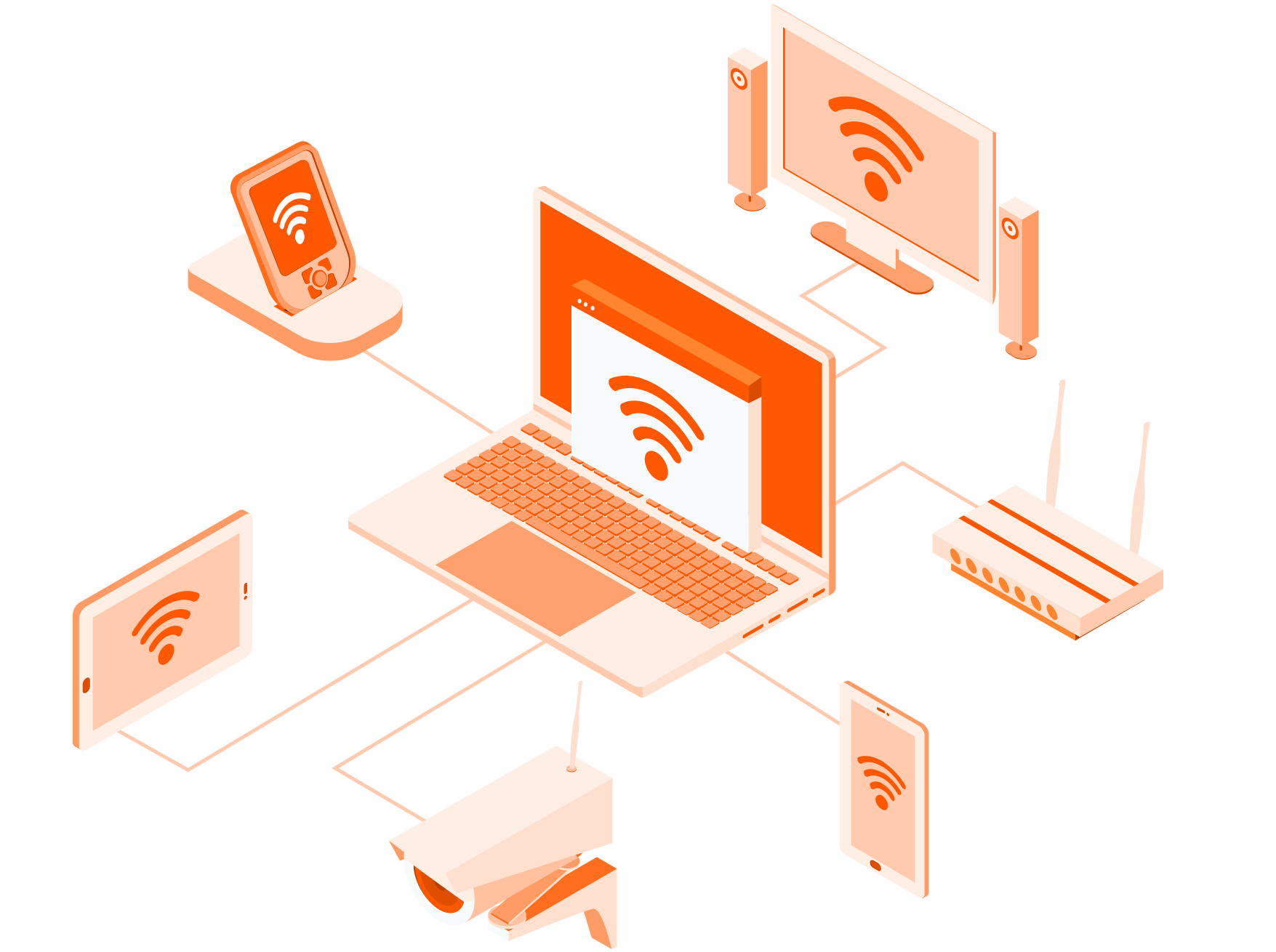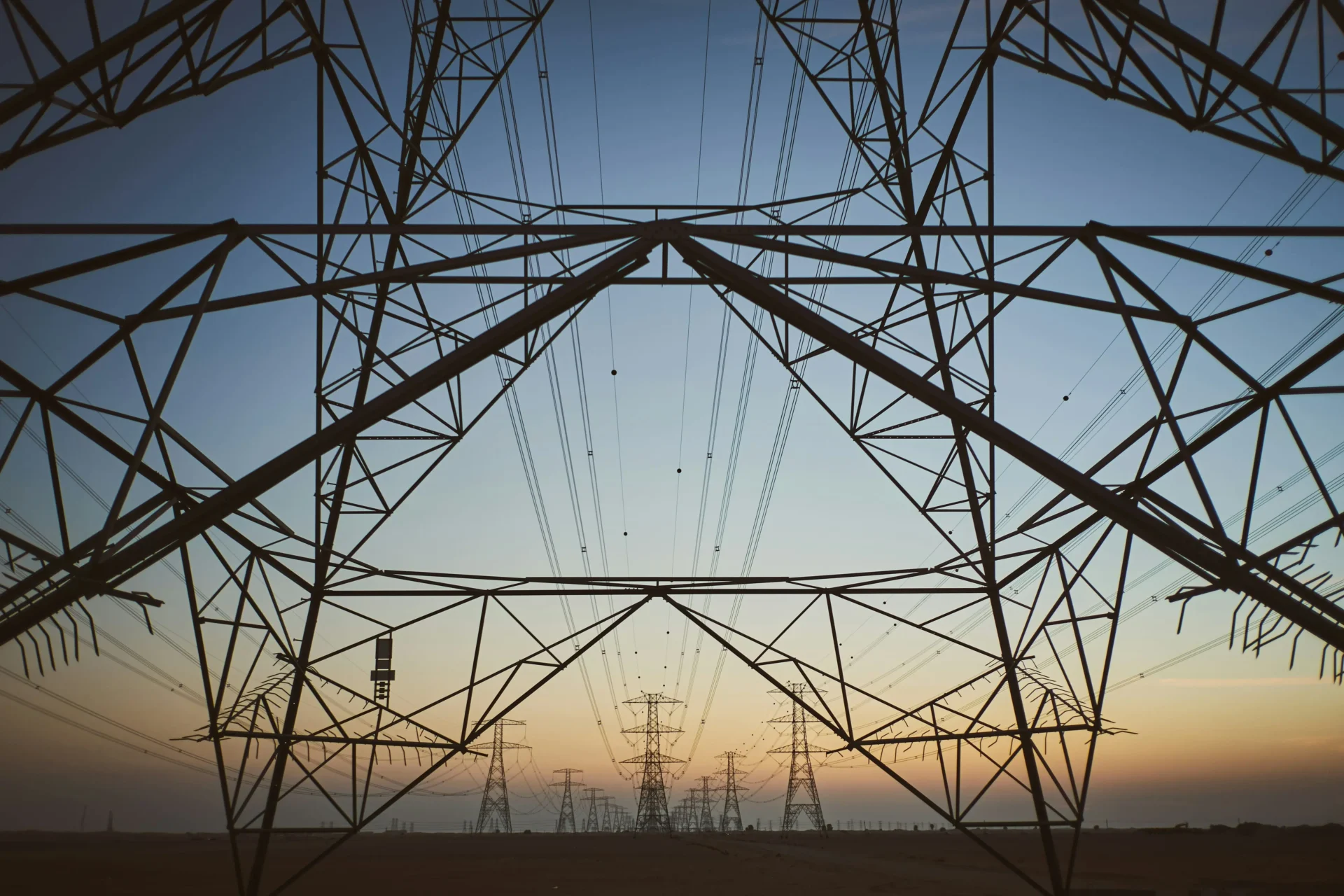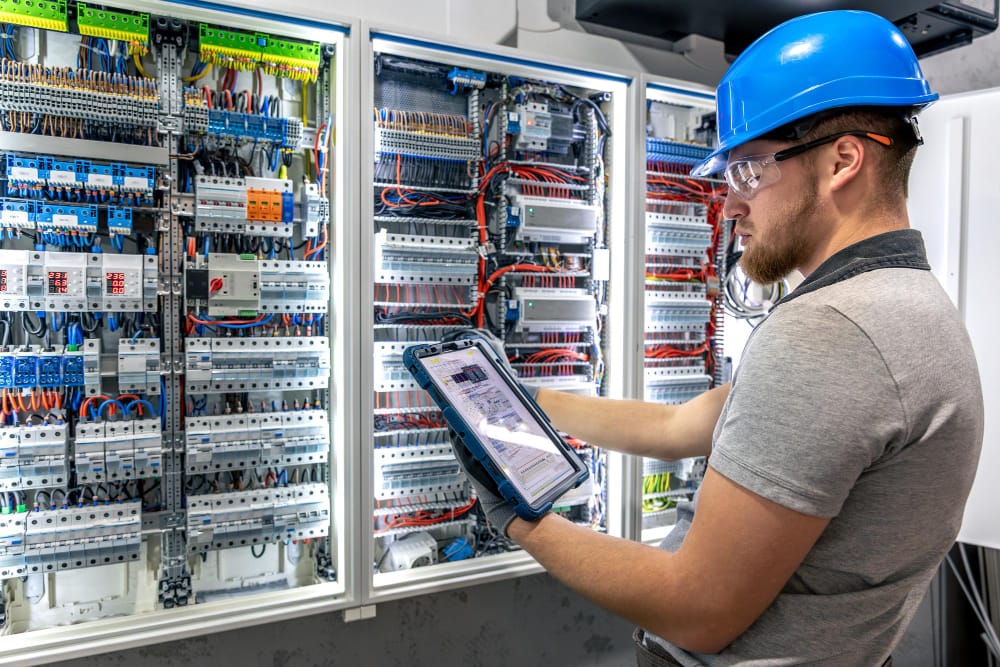Concerns regarding Earth’s sustainability and optimal solar power usage are widely discussed. At the same time, solar energy is a source of power that never runs out, and its usage itself doesn’t cause pollution. That brings us to exploring how software solutions can contribute to the sustainability and solar energy niche.
In the energy management market, household penetration as of 2024 was 25.0%, with the prospect of increasing up to 30.4% by 2029. Since energy management IoT, including solar power monitoring, already has an economic value between $80 and $150 billion, the potential for related products in the market is vast.
In this post, you’ll explore the concept of IoT in solar energy monitoring products as well as components of such complex systems. Besides, you’ll review and get to test an example of a computer vision product for solar panel monitoring and discover why IoT in solar energy is such a huge trend as of 2025 and beyond.
What is IoT in solar power monitoring?
IoT (Internet of Things) in solar power monitoring refers to integrating interconnected sensors, devices, and software with solar power systems.
At the same time:
Solar power monitoring is the process of tracking and analyzing the performance of solar energy systems in real-time or over a period.
Basically, IoT in solar energy monitoring systems is the usage of smart devices collecting data from solar panels, inverters, and other system components to ensure optimal energy production, identify issues, and improve overall efficiency.
Without further ado, here are the key features and capabilities that are attributed to IoT solar energy solutions:
- Real-time data tracking
- Remote management
- Data analytics
- Predictive maintenance
- Direct and indirect energy optimization
- Alerts and notifications
Types of data that IoT in solar power monitoring can provide by category are shown in the image below:
Technology application examples
Here’re several examples of technology utilized in IoT in solar energy projects:
- Open Solar Outdoors Test Field (OSOTF). OSOTF in Canada monitors photovoltaic modules’ output alongside metrics like solar radiation, temperature, and wind speed.
- IoT-Based Solar Power Monitoring with ESP32. This method uses ESP32 to track solar panel voltage, temperature, and light intensity, uploading the data to ThingSpeak for remote monitoring.
- Smart Solar Monitoring with Raspberry Pi: A Raspberry Pi-based system collects data from sensors to monitor parameters like power output, panel temperature, and weather conditions. The data is processed locally or uploaded to cloud platforms for real-time analysis and performance optimization.
As it’s possible to observe, IoT for solar energy projects can be a fairly complex system encompassing a mix of software with high-tech physical devices.
Key components of an IoT-based solar monitoring system
Let’s proceed with reviewing the components of a regular IoT for solar energy projects system. Merged together, they conceive a complete system that can simultaneously track parameters, transfer data in real-time, analyze it, and display it as charts or through other data visualization options.
#1 Sensors
Sensors in IoT-based solar monitoring systems measure key parameters. Among them, there are power output, temperature, irradiance, and environmental conditions such as humidity and wind speed. These inputs present real-time data collection used later on for analytical purposes.
Examples: Photovoltaic (PV) sensors, temperature sensors, wind sensors.
#2 Data processing and analytics platforms
Data processing platforms aggregate and analyze data from sensors, enabling insights into system efficiency, fault detection, and predictive maintenance. Cloud-based solutions often support these tasks by offering scalability, data visualization, and reporting functionalities.
Examples: AWS IoT Core, Microsoft Azure IoT, Google Cloud IoT.
#3 Connectivity solutions
Reliable connectivity options are needed to ensure uninterrupted data transmission from sensors to processing platforms. Stable options like Wi-Fi, cellular networks, or LPWAN cater to varied energy setups, depending on location and system requirements.
Examples: LoRaWAN, 4G LTE, Zigbee.
#4 Control systems
Control systems act as the brain of the solar monitoring setup, allowing operators to manage and regulate the solar plant remotely. They facilitate automated responses to detected issues.
Examples: SCADA systems, Programmable Logic Controllers (PLCs).
You may be additionally interested in exploring practices for overcoming renewable energy challenges in business.
#5 Power management units
Power management units regulate energy distribution, ensuring optimal usage and storage efficiency while preventing overloads or downtime. They play a crucial role in managing battery systems and grid connections.
Examples: Maximum Power Point Tracking (MPPT) controllers, charge controllers.
#6 User interface and mobile applications
User-friendly interfaces and apps provide real-time monitoring and control of solar systems from anywhere. These tools display key metrics, generate reports, and notify users about system health or failures.
Examples: SolarEdge Monitoring App, Enphase Enlighten, SMA Sunny Portal.
#7 Security mechanisms
Security mechanisms protect the solar monitoring system from cyber threats and unauthorized access, ensuring data integrity and system reliability. These include encryption, authentication protocols, and intrusion detection systems.
Examples: TLS/SSL encryption, VPNs, Firewalls.
#8 Energy storage solutions
Energy storage solutions complement solar monitoring systems by storing excess energy for later use, improving reliability during periods of low sunlight or high demand. These systems integrate with monitoring platforms.
Examples: Tesla Powerwall, LG Chem RESU, SonnenBatterie.
IoT solar power monitoring systems generate heavy volumes of big data in the operation process. Explore the big data trends to follow to reap the most benefits of big data analytics and IoT for solar energy projects.
How to implement IoT in developing solutions for solar energy
See the checklist for implementing IoT in solar energy monitoring solutions in the image below:
Feel free to use this checklist as a guide for an IoT in solar energy adoption initiative. However, be aware that an actual business scenario may need substantial changes in the suggested strategy. That’s why you need, above everything, the right tech partner that specializes in related software technologies and is well-familiar with the niche.
Intelliarts’ solar panel monitoring solutions in action
Here at Intelliarts, with more than 24 years of experience with software development across industries, including energy and high-tech, we are well-versed in IoT for solar energy projects. Moreover, we’ve partnered with industry leaders like EV Connect, EVIQ, Gerenlane, and others. One of our recent developments is a computer-vision solar panel damage detection demo.
Additional details on AI in solar panel damage detection are provided in the corresponding post by Intelliarts.
The computer vision model by Intelliarts is designed to detect anomalies in solar panels, particularly overheated spots. The model operates on infrared images of solar panels. It indicates the overheated spot, outlines its area, and shows the approximate accuracy of anomaly detection. You can use your own infrared images for testing or utilize samples from our dataset.
This AI solution is a Proof-of-Concept rather than a finished software product. It can be used to drive IoT-based solar power monitoring systems. For example, infrared cameras can be set to take pictures of solar panels, and the software would be able to automatically analyze anomalies and provide reports about solar panel performance.
Explore the video depicting how the AI demo works in the video below:
It’s essential to note that the development of solar power monitoring systems requires substantial expertise in software development as well as experience with respective systems composed of IoT devices. Therefore, when it comes to such a project, having the right tech provider with plenty of related success stories as your partner is half the battle.
Why IoT-based solar power monitoring systems are the new industry trend
Let’s get through several value-adding reasons to invest in IoT in solar energy as one of the most trending technologies in the industry:
- Source of big data. Modern-day businesses rely on big data collection heavily, as companies leveraging it to a large extent can achieve the most benefits. As mentioned above, IoT in power monitoring systems collects a lot of fully insightful data for businesses to analyze and use in decision-making. This point is already enough to justify investments in smart solar monitoring solutions.
- Labor security and safety. IoT systems reduce the need for frequent manual inspections by enabling remote diagnostics and automated alerts for potential issues. This minimizes the risk of workplace accidents and ensures that maintenance teams are deployed only when necessary. In the situation when 2.6 million non-fatal workplace injuries occurred in 2023 in the US only, and labor security is still a critical concern, automated monitoring solutions can’t prove themselves to be even more impactful.
- Environmental benefits. IoT solar systems help to contribute to sustainability goals, such as the reduction of greenhouse gases, excessive water usage, etc. Basically, IoT in solar systems aids in addressing an entire range of pressing environmental problems.
- Financial benefits. Adopting IoT-based solar power monitoring systems can lead to significant cost savings and financial efficiency, optimally resulting in positive ROI and subsequent monetary advantages. That’s achieved through optimizing energy production and reducing downtime through predictive maintenance for eco energy. Additionally, these systems help maximize returns on investment by extending equipment lifespan.
Although the listed are far from being the only reasons to adopt IoT-drive power monitoring, they already prove the immense value that such an initiative can offer to businesses and their direct customers.
Final take
IoT-based solar power monitoring systems are transforming the renewable energy landscape. By improving efficiency, reducing costs, and supporting sustainability goals, they offer unparalleled value to businesses and end-users alike. As the energy sector continues to evolve, adopting these smart solutions ensures optimized performance and long-term benefits for solar energy systems.
When it comes to high-tech mixed with software development, having the right tech partner is half the battle. Here at Intelliarts, with more than 24 years of experience in the market delivering custom solutions, we can provide the high-end development, from solar power monitoring product to ai vehicle damage inspection solution. Don’t hesitate to reach out and discuss opportunities.
FAQ
1. Can an IoT-based solar monitoring system work without an internet connection?
Yes, an IoT-based solar panel monitoring system can operate without the internet by utilizing local servers or offline-capable edge computing. This approach ensures real-time solar energy performance tracking even in remote areas, enabling effective IoT-enabled solar energy management without relying on consistent connectivity.
2. Is it feasible to upgrade an IoT system on existing solar infrastructure?
Absolutely! Retrofitting IoT for solar power systems on existing infrastructure is feasible. Specialized IoT-enabled solar energy management devices can integrate seamlessly, upgrading legacy systems with smart solar monitoring solutions for enhanced solar energy performance tracking and efficiency improvements.
3. How much does an IoT solar power monitoring system cost?
The cost of IoT solar energy solutions varies based on system size, sensors, and features. The development of a basic solar panel monitoring software system may start at $20,000, while advanced IoT-based solar power monitoring systems for large-scale projects may cost around $200,000 or more, depending on the functionalities needed.




